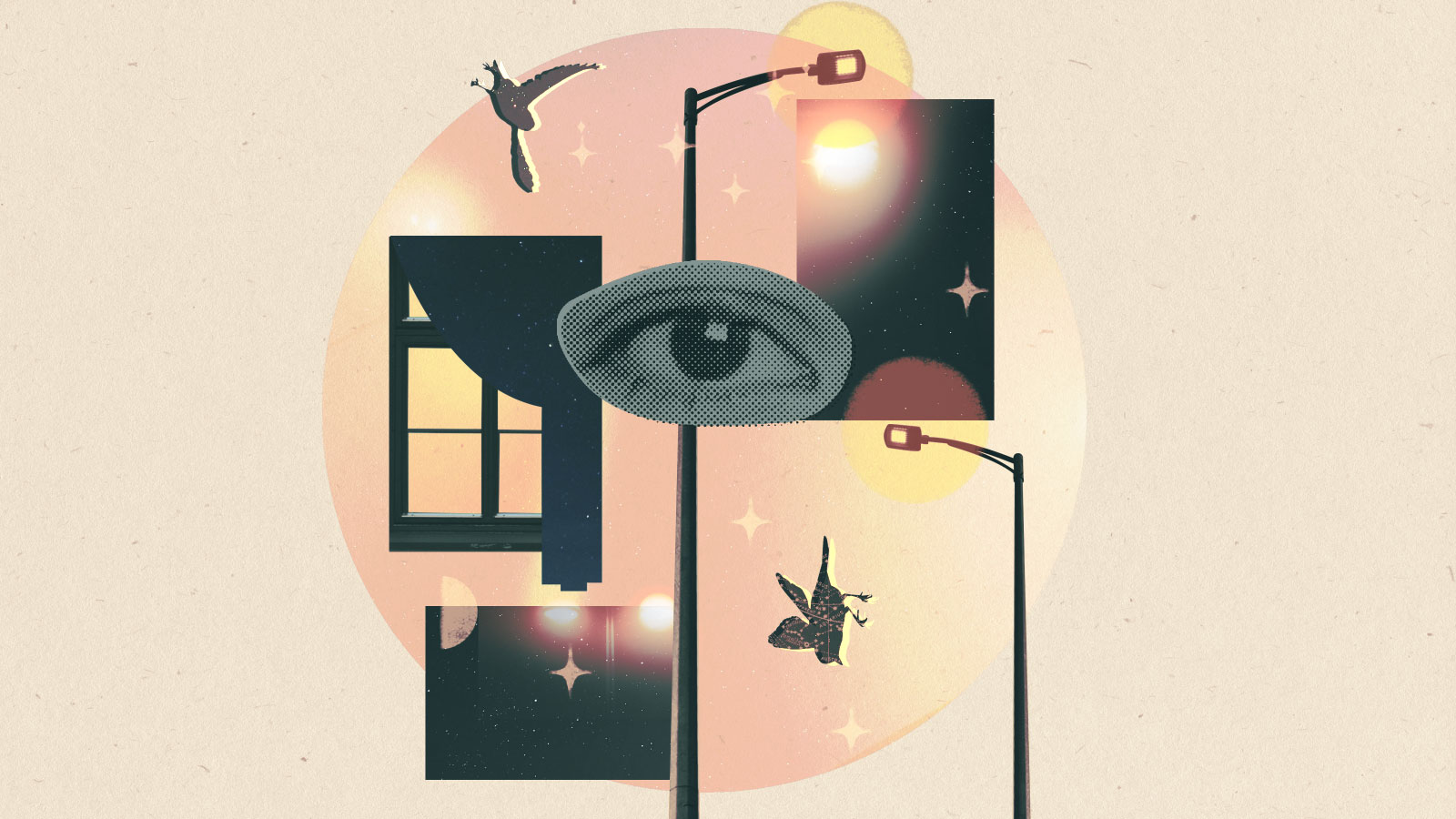This story is part of the Grist series Coming to our Senses, a weeklong exploration of how climate change is reshaping the way we see, hear, smell, touch, and taste the world around us.
The beginning of the night at the McDonald Observatory can be frantic. Jason Young, a visiting lecturer in astronomy at Mount Holyoke, starts by tracking the steadiness of the atmosphere, looking at “standard” stars to calibrate the Harlan J. Smith Telescope. He makes sure the telescope’s iconic white dome stays on track, checks that there are no stray lights in the dome that could mar data collection, and finally, watches for clouds. By midnight, he settles into the telescope’s top floor control center, alone in a pool of light from two huge computer monitors.
“It’s a marathon, not a sprint,” said Young. “But if everything goes smoothly, then it’s pretty easy to just keep an eye on things.”
The observatory is located in the Davis Mountains, high above the Chihuahuan Desert. By day, the isolated West Texas mountain range is striking, ornamented with dark clumps of oak, pinion, and juniper scattered across the gold and khaki grasslands. At night, clear skies reveal endless trails of stars.
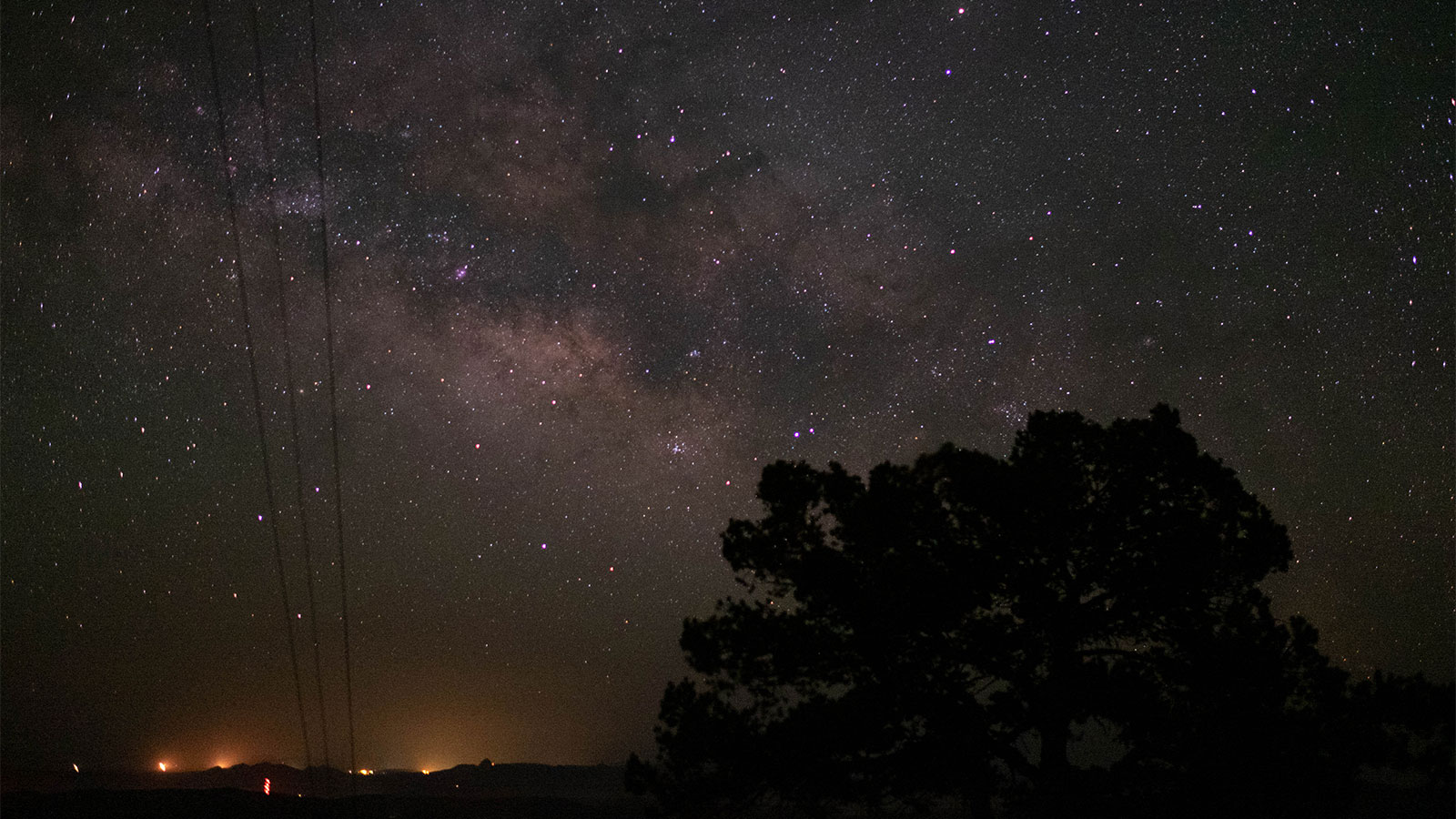
Young is observing LEDA 1562327, a diffuse spiral galaxy interacting with a second galaxy that, in his words, are going through a “weird phase” in their evolution: They have enough gas to form stars, but for some reason, aren’t. Meanwhile, next door — astronomically-speaking — two similar galaxies are colliding, forming stars at a rate of nearly 100 per year.
“It’s like a quiet cottage right next to a rock concert,” said Young. “So, I’m trying to figure out why these two are not doing anything when the neighborhood seems to be very active.”
Until a decade ago, the Davis Mountains were one of the darkest places in North America, which is why in 1933, the University of Texas established the observatory on Mount Locke, and later, expanded to nearby Mount Fowlkes, taking advantage of the clear night and high altitude. The observatory’s biggest project for the last four years has been HETDEX, the Hobby-Eberly Telescope Dark Energy Experiment, created to map the night sky out to 11 billion light years in order to figure out why the universe is expanding as it ages.
Clear, dark skies are a resource and key to doing astronomical work, but growing sources of artificial light threaten the night. The McDonald Observatory is situated at the southern edge of the Permian Basin, one of the largest oil fields in the United States. In 2016, with the adoption of hydraulic fracturing and other drilling technologies, oil and gas production in the region increased dramatically. The boom brought thousands of well pads, midstream facilities, flare stacks, and traffic, filling the night sky with artificial light, easily seen by the naked eye as “skyglow,” a massive dome of orange glare on what was once an almost dark horizon.
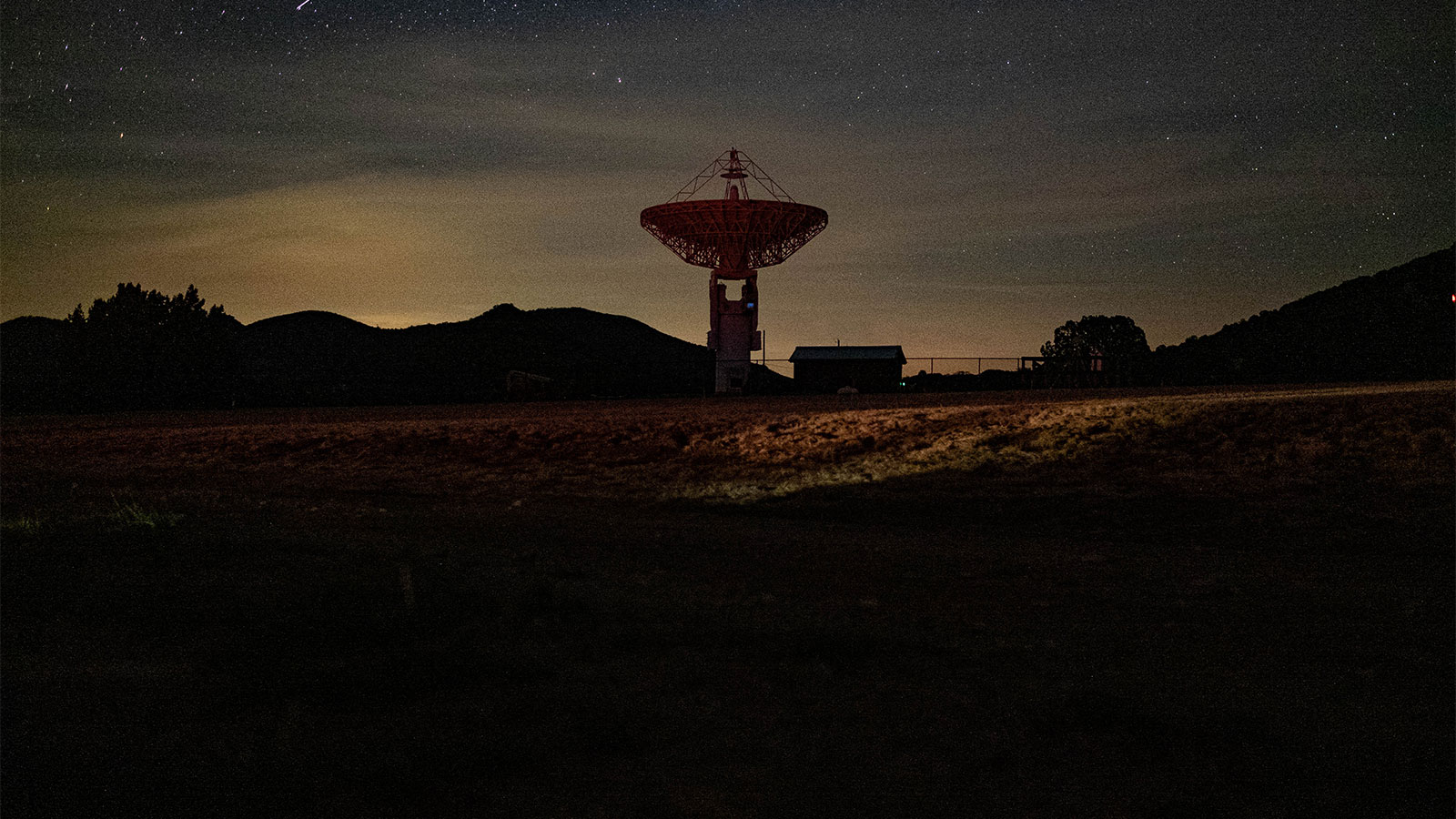
The sudden spike in oil and gas drilling came with a nearly 60 percent increase in light pollution at the observatory, threatening the work McDonald has been conducting for nearly a century. Some 100 miles to the north, on the northern edge of the Permian, Carlsbad Caverns National Park in New Mexico noticed a similar change: “They had a 710 percent increase in light pollution in about eight years,” said Stephen Hummel, the Dark Skies Initiative Coordinator at McDonald. In 2020 alone, production in the Permian accounted for 30 percent of all crude oil production and 14 percent of the country’s natural gas production.
“Seeing the real sky, the old-fashioned way, is still important,” said Hummel. “There should be places left … that we can preserve where people can go and experience the night.”

The loss of darkness has far-reaching impacts. Under starlight, the world can feel old and gentle. To sit under the stars is to feel a sense of place, space, and landscape in a manner similar to philosophers, astronomers, artists, and lovers across time. Old records tell us of our relations to the night: The seven Kiowa sisters, for instance, who, when their brother transformed into a bear, climbed onto a tree stump that raised them to safety in the sky. Or the sea-voyaging chiefs that navigated the Polynesian triangle, oriented by the rising and setting of celestial bodies, settling islands across the Pacific. Their journeys have inspired contemporary Indigenous seafarers who still travel the same ocean pathways, connected to the same epic sagas by the same stars.
But on land, more than 80 percent of the planet’s population lives under light-polluted skies. More than a third of the world, around 2.5 billion people, can no longer see the Milky Way. That pollution has far-reaching consequences that threaten all our senses: from the loss of familiar creatures that live for the night, to unique interpretations of our position in the world.
At the McDonald Observatory, oil and gas development offers an extreme example of this rapid loss of the night — without access to a dark sky, our ability to understand the origin and structure of the universe disappears in the haze of skyglow.

“Humans have looked up for as long as we have been human and understood our place in society and our place in the cosmos by telling stories of the stars,” said Ruskin Hartley, Executive Director of the International Dark-Sky Association. “Light pollution is fundamentally robbing humans of something that has been part of the human experience for as long as we’ve been on the planet.”
Light pollution has serious impacts outside of astronomy as well. As cities grow, energy development continues, and homes creep deeper into the dark parts of the planet, skyglow is everywhere, the fingerprint of an expanding built world, impacting everything.
Ambient light pollution can cause chronodisruption — the disruption of circadian rhythms, which can impact brain wave patterns, hormone secretion, and neuronal activities. Humans have adapted to day and night, and without extended periods of darkness, sleep-wake patterns can impact the production of melatonin in the body. Reduced melatonin levels have been linked to higher rates of diabetes, obesity, anxiety, and depression. Nighttime exposure to artificial light has also been found to increase cancer risk; breast and colorectal cancers in women, prostate and pancreatic cancers in men, to name a few.
Newly hatched sea turtles navigate by the moon, and artificial light can confuse hatchlings, drawing them toward land where they can be eaten by predators or die from exhaustion and dehydration. Migratory birds follow the moon and stars to get to their seasonal destinations, and bright night lights can lead them off course, often causing confusion and death. In New York City, for instance, the Tribute in Light, a 9/11 memorial “comprised of eighty-eight 7,000-watt xenon lightbulbs positioned into two 48-foot squares, echoing the shape and orientation of the Twin Towers,” is thought to have confused, disoriented, or killed an estimated 1.1 million birds between 2010 and 2016. Ornithologists report that when lit, hundreds of birds circle inside the beams, trapped by the light.
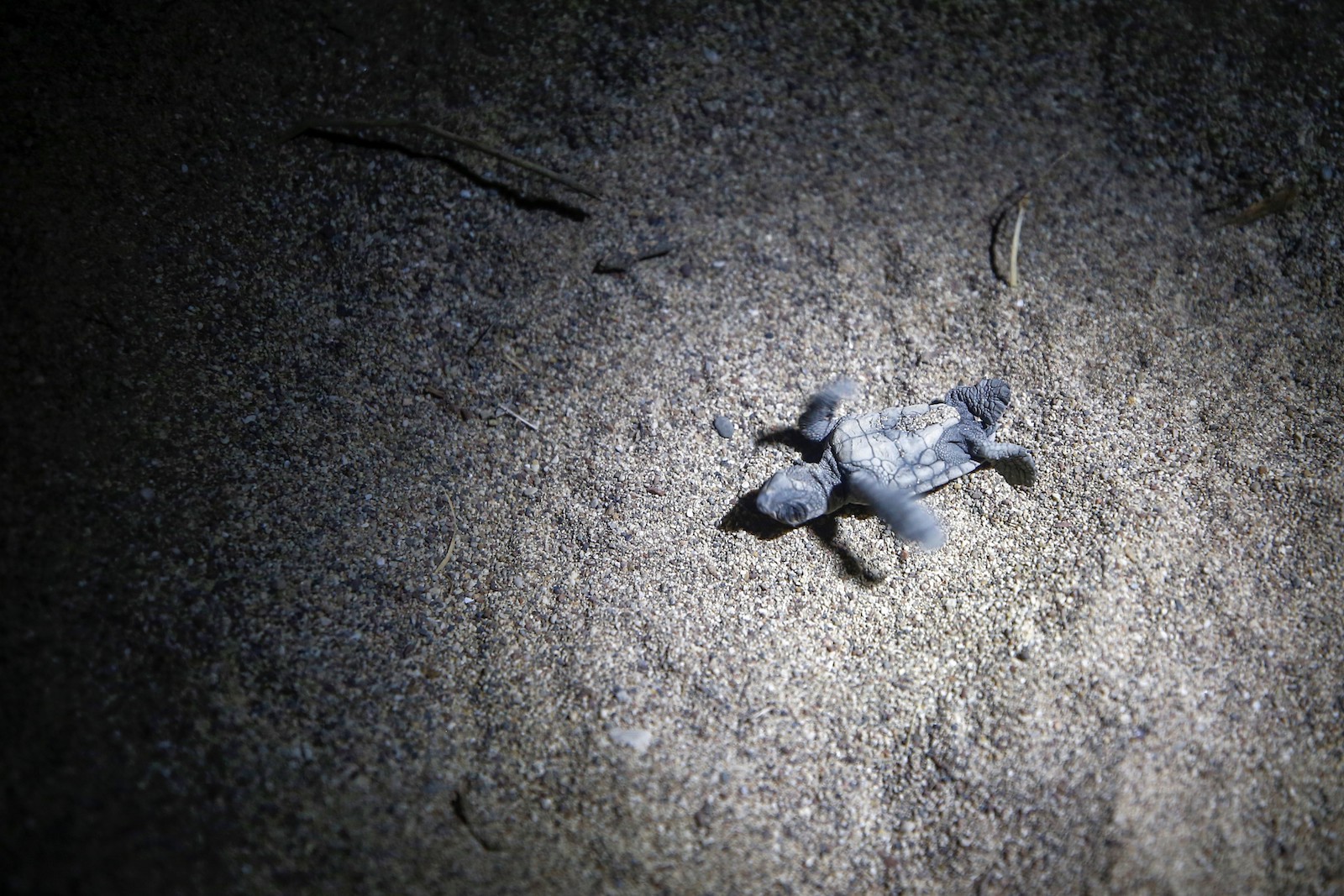
Nearly 70 percent of mammals are nocturnal and artificial light influences everything from their nesting behaviors to feeding habits — including their access to food sources like insects. Researchers also believe that artificial light has significant, worldwide effects on plant ecosystems ranging from overgrowth to changes in pollination.
Insects provide “vital ecological services” to the world, like waste removal and pollination, and artificial light at night is particularly devastating to the work insects perform. In the United States alone, it’s estimated that insects involved with dung burial, pest control, pollination, and wildlife nutrition provide nearly $57 billion in ecological services. Artificial light can have serious impacts on their work: Night lights disorient insects, tiring them out, killing them when they collide with lamps, or making them easier meals for predators. Increased light pollution has also been associated with a higher risk for infection from insect-transmitted diseases, like malaria and chagas — brighter towns and cities mean more mosquitoes.
“It’s nice when we have those numbers and the ability to quantify,” said Hartley of the International Dark-Sky Association. “But we can’t lose sight of the things that we’ll never be able to turn into dollars and cents.”
In Australia, only 2 to 5 percent of the population can see the Milky Way from their backyards due to urban and industrial light pollution. For Aboriginal people living in large, urban areas like Sydney or Melbourne who carry knowledge about the night sky, a loss of access to the stars can have devastating long-term effects. Astronomer Peter Swanton, who is Gamilaraay, studies light pollution in Australia by examining which objects in the sky are lost at different levels of skyglow, translating what star loss means for traditional knowledge systems.
“There’s a Gamilaraay story about the Milky Way, and it uses the dark patches of the Milky Way to form the celestial emu,” said Swanton. “We use that emu almost like a calendar and based on what the emu is doing in the sky, we can have an idea of what’s happening with the emus here on Earth.”
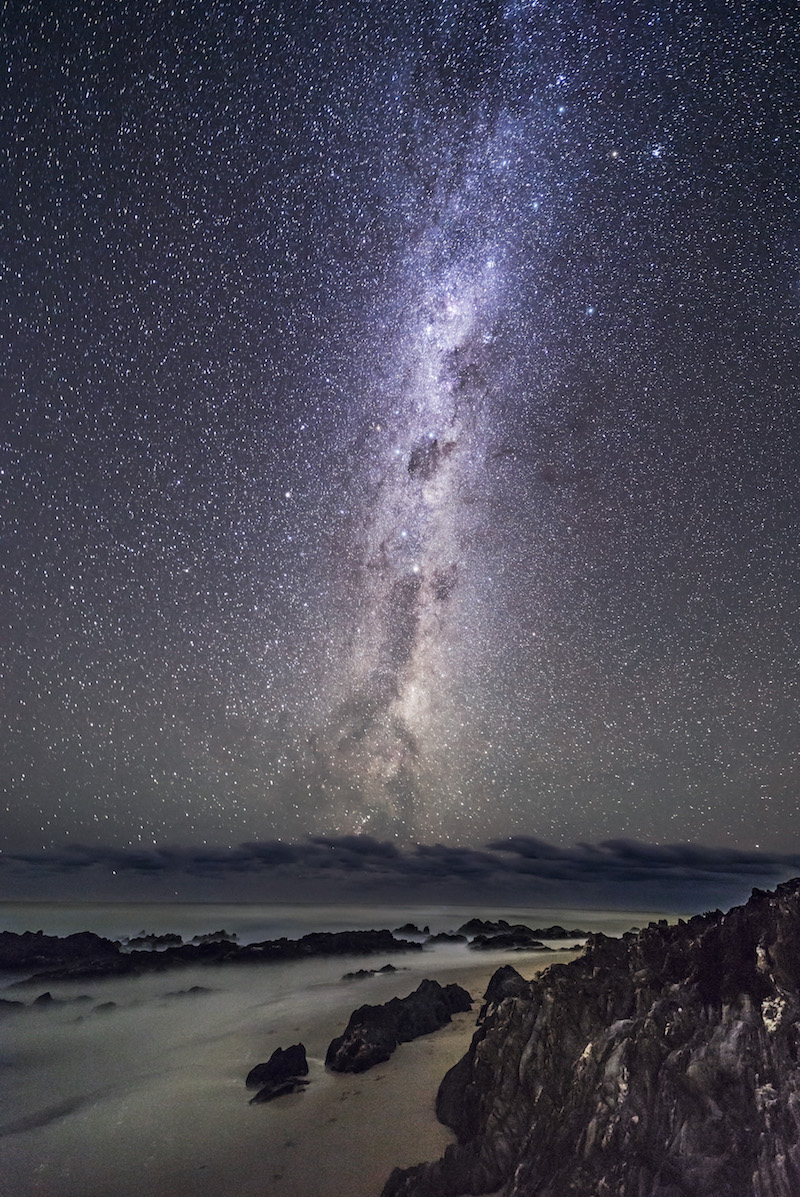
That includes tracking emu breeding patterns so people can hunt eggs for food or following the seasons. Swanton says the night sky has also been observed to understand when dry or wet seasons are coming, as well as marking some ceremonial times.
“Aboriginal stories are all relational,” said Swanton. “They’re all about how you relate to the world around you, to your country, and to that connection with the sky.”
”There’s always value in trying to understand our universe,” said Young at the McDonald Observatory. “It helps us understand where we come from.”
Unlike finding answers to dealing with microplastics in the ocean, or perfecting carbon capture before the planet crosses critical temperature thresholds, restoring the night sky is fairly easy.
Start by imagining a dark room with a single light bulb hanging from the ceiling. Switch on the light. The glare from the naked bulb may be harsh, but the entire room is illuminated. Add a lampshade, and the glare disappears while the light is directed primarily to the floor and the ceiling. Shield the top of the shade, and the ceiling becomes darker while the light directed downward becomes brighter.
Now take that same logic outdoors and you can begin to imagine unshielded floodlights, streetlights, wallpacks, barn lights, bollards, and period-style fixtures burning through the night. In the U.S. alone, poor night-lighting practices waste $3.3 billion a year in lost energy and electricity generation. Add shielding to those lights, direct them downward to the ground, turn down the intensity, turn them off when they’re not in use, and even change the color — white or amber colors scatter less light into the atmosphere than daylight-white or blue lights — and much of that skyglow begins to disappear.

“The night sky is one of the only resources that the National Park Service manages that’s 100 percent restorable,” said Bob Meadows, a physical scientist with the Park Service’s Natural Sounds and Night Skies Division. “We’re just masking our ability to see it and experience it.”
In the years after McDonald Observatory noticed the explosion in light pollution, scientists began contacting oil and gas operators in the Permian Basin, advocating for lighting to be shielded, angled, and swapped for night-friendly colors. Many companies complied, with employees almost immediately reporting better work conditions and lower energy bills. At McDonald, skyglow dropped dramatically — though it is still not as dark as it once was. That success, however, is an outlier, and the remaining light pollution still costs astronomers, like Young, valuable time and resources.
“Being in an area with light pollution is like trying to listen to someone in a crowded room: You can do it, but it takes a lot more work,” said Young.

On November 13, 1833, the night lit up as thousands of lights streaked across the sky.
Visible from what is currently Halifax, Canada, to Jamaica and points as far west as present-day Elm Fork on the Red River in Oklahoma, the Leonid meteor shower is recorded in the Kiowa calendar as D’ä’-p’é’gyä-de Sai, or “winter that the stars fell.” It is with good reason: It’s estimated that between 20 and 30 meteors streaked across the sky per second.
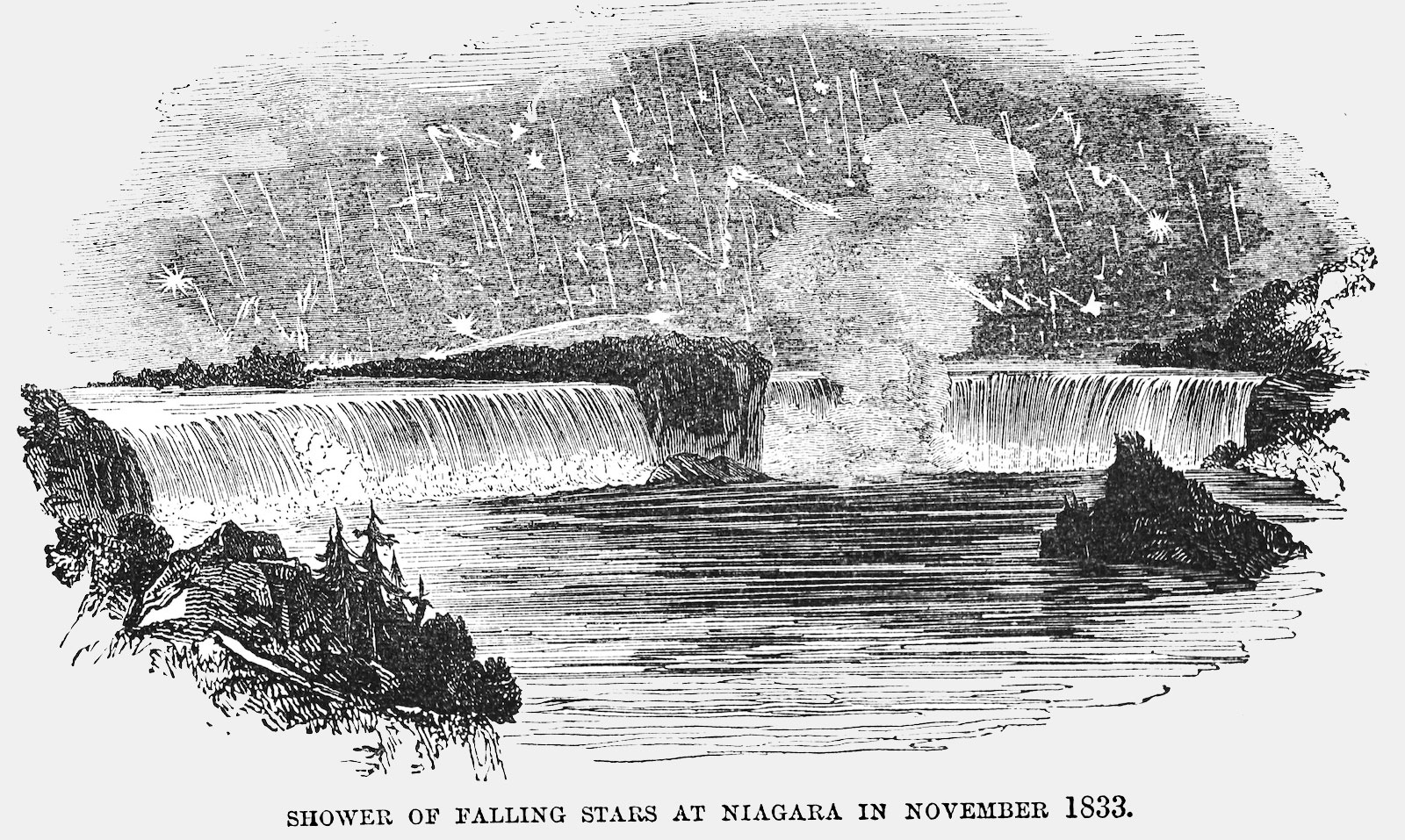
“The event is still used as a chronological starting point by the old people of the various tribes,” wrote James Mooney in Calendar History of the Kiowa Indians — a translation of historic Kiowa records. “It is pictorially represented on most of the Dakota calendars.”
In 2032, the Leonid shower is expected to return. Were it to be equal to its power during D’ä’-p’é’gyä-de Sai, and you were standing in a dark place, like the Davis Mountains, meteors would fall with the intensity of a howling blizzard. They would light the scrubby trees and steep, rocky slopes around you, casting shadows below the white telescope domes of McDonald Observatory, interrupting any work astronomers hoped to get done.
For nearly 80 percent of the planet, however, only a handful of meteors will be visible due to light pollution: Falling rock and ice as old as human memory, turning to fire somewhere high above the skyglow.

